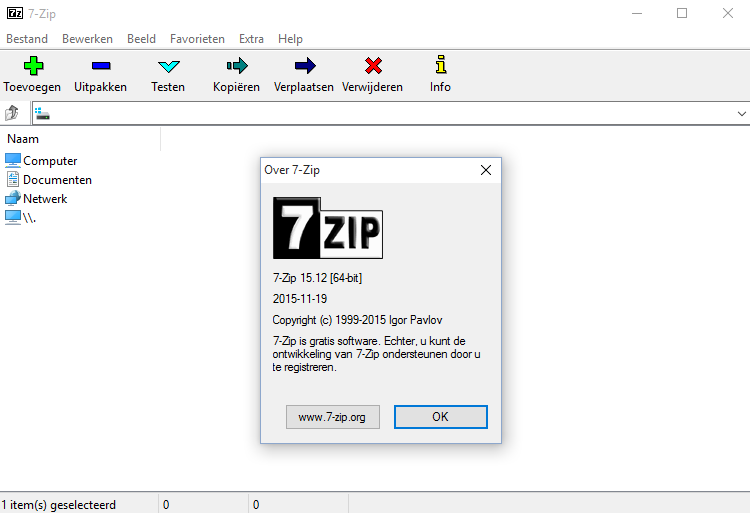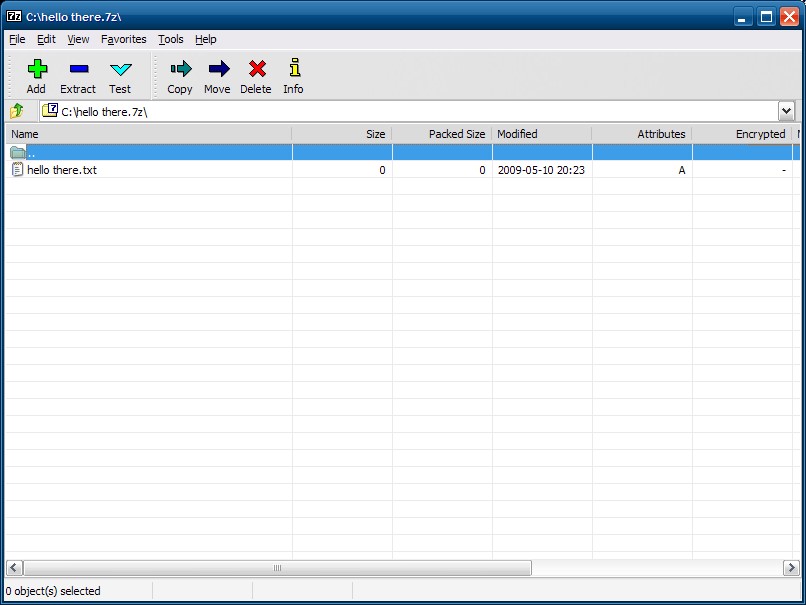A Zip Extractor as per your OS (p7zip for Linux, Keka for Mac and 7-zip for Windows, all of them being free Apps). Etcher, as a free program for burning images, used for Windows, macOS and Linux. Installing Google Chromium OS in USB Drive. Keka is a free file archiver for macoS and the main compression core is p7zip (7-zip port). Free to Try macOS 113 votes WinRAR 6.00 Powerful archive manager can backup your data and reduce the.
- Apple macOS / OSX / Darwin Lazarus IDE support for Carbon widgetset is alpha (a solution could be using alternative libraries, as Qt, but I would prefer the native, default widgetset), and moreover I can rarely have full access to OSX systems; however the Lazarus support for OSX is quickly progressing, and my interest in porting PeaZip to OSX.
- A new macOS release is nearing release, and it's a big one. So big that this time it's really, completely and definitely not OS X any longer. With the death of Kexts looming and the transition away from Intel CPUs spelling disaster for Hackintoshers and multi-OS users alike, it's certainly.
- 1.Zipped File
- 2.MAME Game ROM
File Type 1Zipped File
| Developer | Phil Katz |
| Popularity | |
| Category | Compressed Files |
| Format | Zip |
What is a ZIP file?
A ZIP file is an archive that contains one or more files compressed or 'zipped' using Zip compression. It stores files separately from each other allowing the files to be compressed using different methods and extracted without compressing or decompressing the entire archive.
The Zip format was created in 1989 by Phil Katz and was used in the PKZIP utility developed by PKWARE, Inc. The format grew in popularity and is now supported by most file compression/decompression programs.
You may encounter ZIP files in a variety of ways, such as receiving compressed files via email from a friend or co-worker, downloading files online, or exploring backup files that have been compressed with Zip compression. Both Windows and macOS come with programs that can compress and decompress ZIP files.
How do I open a ZIP file?
In Windows, you can open a ZIP file with File Explorer, also known as 'Windows Explorer,' simply by double-clicking the file. You can then choose one, multiple, or all of the files to extract from the Zip archive. In macOS, you can open a ZIP file with Apple Archive Utility by double-clicking the file.
How do I create a ZIP file?
Windows users can create ZIP archives by right-clicking a file and selecting 'Send to → Compressed (zipped) Folder.' macOS users can create ZIP archives by right-clicking a file and selecting 'Compress [filename].'
New Compressed (zipped) Folder.zip - The name Microsoft Windows gives to new ZIP files created via the context menu (right-click and choose New → Compressed (zipped) Folder).
Open and view .ZIP files with File Viewer Plus.Programs that open ZIP files


File Type 2MAME Game ROM
| Developer | The MAME Team |
| Popularity | |
| Category | Game Files |
| Format | Zip |
.ZIP File Association 2
Game file used by MAME arcade video game emulators; may contain the entire contents of the arcade game data, or may be supplemented by .CHD arcade hard disk file, which is required in order to play the game; stored in a compressed .ZIP format.
MAME ROMs are sometimes difficult to load properly due to file format and emulation software differences. Therefore, some emulators are distributed with a tool that verifies whether a ROM can be loaded or not.
Programs that open ZIP files
UPDATE: Back in August 2020 I showed you how to install macOS Big Sur with OpenCore on Linux. Back then Big Sur was in beta and you had to take some extra steps to install it. Now, that Big Sur is out of beta, the installation process was simplified and I've decided to create a new tutorial instead of editing the old one, to avoid any confusion. Let's get started…
If you're running a Linux distro as your daily driver, you can still other distros and OS'. You can even enjoy macOS. You can run Catalina using the clover bootloader and you can even install macOS in a Docker container.
Today we're going to take a look at how set up a simple macOS Big Sur VM in QEMU, accelerated by KVM.
ALSO READHOW TO: Dual Boot macOS and Linux
REQUIREMENTS
- A modern Linux distribution
- QEMU > 2.11.1
- A CPU with Intel VT-x / AMD SVM support is required
- A CPU with SSE4.1 support is required for >= macOS Sierra
- A CPU with AVX2 support is required for >= macOS Mojave
- Internet access for the installation process
INSTALL QEMU & OTHER REQUIRED PACKAGES
Open the terminal and run: sudo apt install qemu uml-utilities virt-manager dmg2img git wget libguestfs-tools p7zip
NOTE: Adjust install command and, possibly, packages names according to your distro.
INSTALL macOS Big Sur
1. Open the terminal and run git clone --depth 1 https://github.com/kholia/OSX-KVM.git macOS-Big-Sur. When you're done cloning the git repo, cd into path with cd macOS-Big-Sur
2. Download macOS Big Sur installer from Apple with ./fetch-macOS.py.
NOTE: Here you can choose which macOS you want to install. We will install Big Sur.
When the download is done, you should have InstallAssistan.pkg in your folder.
3. Now we need to unpack the downloaded InstallAssistan.pkg. To do this run 7z e -txar InstallAssistant.pkg '*.dmg'
This should give you the SharedSupport.dmg file
4. You'll need to extract Basesystem.dmg from SharedSupport.dmg. First run 7z e -tdmg SharedSupport.dmg 5.hfs
Next create a folder called stuff with mkdir stuff and mount the hfs filesystem to the stuff folder with sudo mount -oloop *.hfs stuff
Inside the stuff/com_apple_MobileAsset_MacSoftwareUpdate folder, there's a .zip file.
Run 7z l stuff/com_apple_MobileAsset_MacSoftwareUpdate/*.zip to list the contents of the .zip file with and you will see it contains the Basesystem.dmg that we need.

5. Copy the .zip file to your Desktop with cp stuff/*MacSoftwareUpdate/*.zip ~/Desktop
Extract Basesystem.dmg located inside the zip file on your Desktop > AssetData > Restore
Now move the Basesystem.dmg back to your macOS Big Sur folder and you can unmount the stuff folder created earlier with sudo umount stuff.
P7zip Mac
6. Convert BaseSystem.dmg to BaseSystem.img with qemu-img convert BaseSystem.dmg -O raw BaseSystem.img

File Type 2MAME Game ROM
| Developer | The MAME Team |
| Popularity | |
| Category | Game Files |
| Format | Zip |
.ZIP File Association 2
Game file used by MAME arcade video game emulators; may contain the entire contents of the arcade game data, or may be supplemented by .CHD arcade hard disk file, which is required in order to play the game; stored in a compressed .ZIP format.
MAME ROMs are sometimes difficult to load properly due to file format and emulation software differences. Therefore, some emulators are distributed with a tool that verifies whether a ROM can be loaded or not.
Programs that open ZIP files
UPDATE: Back in August 2020 I showed you how to install macOS Big Sur with OpenCore on Linux. Back then Big Sur was in beta and you had to take some extra steps to install it. Now, that Big Sur is out of beta, the installation process was simplified and I've decided to create a new tutorial instead of editing the old one, to avoid any confusion. Let's get started…
If you're running a Linux distro as your daily driver, you can still other distros and OS'. You can even enjoy macOS. You can run Catalina using the clover bootloader and you can even install macOS in a Docker container.
Today we're going to take a look at how set up a simple macOS Big Sur VM in QEMU, accelerated by KVM.
ALSO READHOW TO: Dual Boot macOS and Linux
REQUIREMENTS
- A modern Linux distribution
- QEMU > 2.11.1
- A CPU with Intel VT-x / AMD SVM support is required
- A CPU with SSE4.1 support is required for >= macOS Sierra
- A CPU with AVX2 support is required for >= macOS Mojave
- Internet access for the installation process
INSTALL QEMU & OTHER REQUIRED PACKAGES
Open the terminal and run: sudo apt install qemu uml-utilities virt-manager dmg2img git wget libguestfs-tools p7zip
NOTE: Adjust install command and, possibly, packages names according to your distro.
INSTALL macOS Big Sur
1. Open the terminal and run git clone --depth 1 https://github.com/kholia/OSX-KVM.git macOS-Big-Sur. When you're done cloning the git repo, cd into path with cd macOS-Big-Sur
2. Download macOS Big Sur installer from Apple with ./fetch-macOS.py.
NOTE: Here you can choose which macOS you want to install. We will install Big Sur.
When the download is done, you should have InstallAssistan.pkg in your folder.
3. Now we need to unpack the downloaded InstallAssistan.pkg. To do this run 7z e -txar InstallAssistant.pkg '*.dmg'
This should give you the SharedSupport.dmg file
4. You'll need to extract Basesystem.dmg from SharedSupport.dmg. First run 7z e -tdmg SharedSupport.dmg 5.hfs
Next create a folder called stuff with mkdir stuff and mount the hfs filesystem to the stuff folder with sudo mount -oloop *.hfs stuff
Inside the stuff/com_apple_MobileAsset_MacSoftwareUpdate folder, there's a .zip file.
Run 7z l stuff/com_apple_MobileAsset_MacSoftwareUpdate/*.zip to list the contents of the .zip file with and you will see it contains the Basesystem.dmg that we need.
5. Copy the .zip file to your Desktop with cp stuff/*MacSoftwareUpdate/*.zip ~/Desktop
Extract Basesystem.dmg located inside the zip file on your Desktop > AssetData > Restore
Now move the Basesystem.dmg back to your macOS Big Sur folder and you can unmount the stuff folder created earlier with sudo umount stuff.
P7zip Mac
6. Convert BaseSystem.dmg to BaseSystem.img with qemu-img convert BaseSystem.dmg -O raw BaseSystem.img
P7zip Mac Os
7. Create a virtual HDD image where macOS will be installed. Run qemu-img create -f qcow2 mac_hdd_ng.img 128G
NOTE: You can change the size of the virtual drive. 128 GB is just an example. Also if, for any reason, you want to change the name of the disk image from mac_hdd.img to something else, you'll also have to update OpenCore-BS.sh to point to the new image name.
8. Now we can start the installation. But before we do, let's edit the OpenCore-Boot.sh and add more RAM ( by default it's set to use 3 gigs of RAM ). 8 gigs should be enough. At least Apple seems to think so.
You can do that with your favorite GUI text editor or from the terminal with nano, micro or vim.
9. Now you can start the installation process. Run ./OpenCore-BS.sh .
10. You'll be greeted by this screen. Choose macOS Base System
10. First thing you'll need to do is run Disk Utility and format your virtual drive.
P7zip Macos
11. Exit Disk Utility, choose Reinstall macOS and go through the usual installation steps.
12. During the installation process, your virtual machine will restart and will boot back up. When it does, choose macOS Installer to continue the installation.
13. After a loong time of installing, you will eventually be able to boot into your macOS installation.
You will be greeted with the welcome screen where you can set up your account and settings.
Don't expect this to run just like a Mac. It's a VM afterall. And it will feel sluggish mainly because there's a lack of hardware acceleration. This can only be fixed by passing through a graphics card to the VM. To learn how to do that and other tips, and troubleshooting check out the official project on Github.
